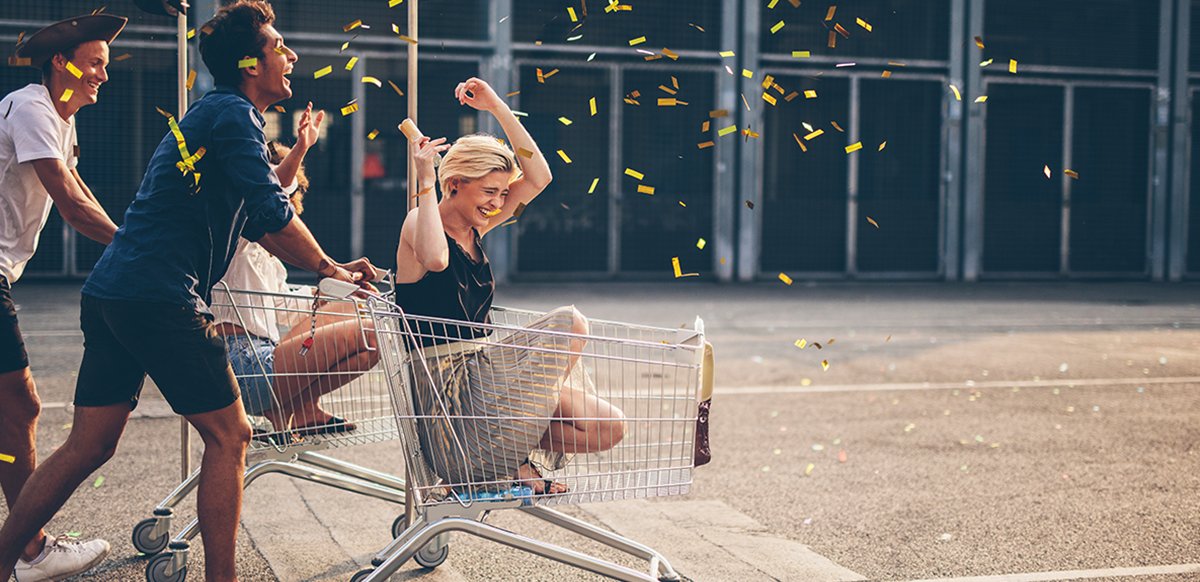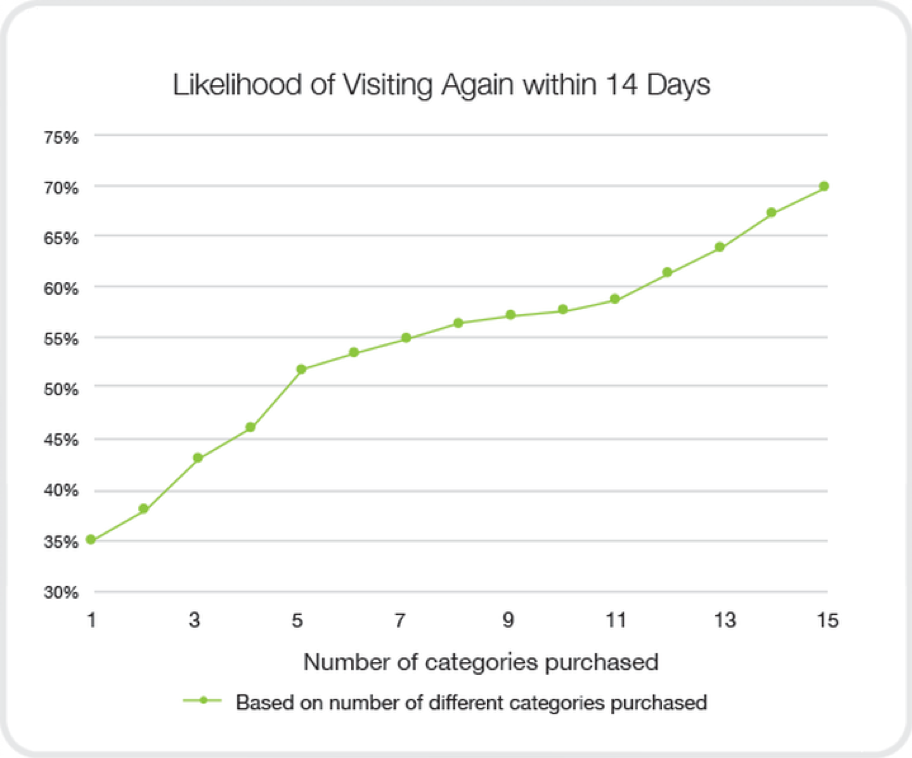
One of the top metrics that brands use when evaluating the health of their business is in-store ticket size. In-store ticket sizes determine how much, on average, your customers spend per visit. This metric can provide insight into the types of products your customers buy and how they react to different promotions and buying suggestions.
Increasing your in-store ticket sizes by just a few dollars can have a significant impact on your bottom line and can even change what products you sell.
You’re already bringing customers through the door. Take the next steps to grow your average ticket and control how your customers buy.
Increase Your Basket Diversity
The team at CiValue discovered that basket diversity is one of the biggest indicators of a customer returning to the store quickly. As the number of categories that a customer purchased items from increased, the likelihood of their visiting again within 14 days also grew.

More businesses try to focus on same-category product recommendations when they promote items. If someone is buying running shoes, the store will promote running tops and leggings. However, if a shopper buys running shoes, a piece of jewelry for a night out, and some lotion, it proves that they find more value in the store.
Your business can take advantage of this by cross-promoting items — meaning offering discounts in one category when customers buy from another — and recommending items in different categories. You can also set up your showroom or business so your customers have to walk through or interact with other categories before they can make a purchase.
Encourage Add-Ons and Impulse Buys
On average, customers spend $5,400 annually on impulse buys, and they make an average of three impulse buys per week. The majority of these impulse buys revolve around food, with 71% of people admitting to picking up a few unplanned items in the grocery store.
The top five categories for impulse buys are:
- Food/Groceries (71%)
- Clothing (53%)
- Household items (33%)
- Takeout (29%)
- Shoes (28%)
If you operate in an industry that sells any of these items, then you can tap into the rush that comes with an impulse to grow your basket. Even brands that don’t sell these items can grow their in-store ticket sizes by creating opportunities for customers to spend more. A few examples of impulse add-ons include food bars at the checkout counter, candles or soaps at a spa, and car detailings at an auto shop.
Also, make sure customers are aware of your add-ons and bundle packages. Highlight your packages on digital menus so customers can see the value they get by adding to their purchase or service package.
Setting affordable levels for these items and marketing them strategically can increase the chances that your customers make spontaneous purchases and spend more with your brand.
Offer Coupons and Discounts
You might worry that coupons will affect your overall gross profit and gross margin rates, but they can actually help them when used well. Customers feel like they are saving money when they receive a coupon, especially if it’s an exclusive one. Psychology Today reports that customers felt better spending $4.29 on yogurt when they saved $0.50 than when they paid full price for yogurt that cost $3.99.
Coupons also increase the likelihood that customers convert. They are more likely to make a purchase than not because they think they are saving money, even though they are actually spending more.
Test different discounts to see what makes customers act and what generates high gross margin rates and in-store tickets. A few options include:
- Setting coupon thresholds (save 10% when you spend $50 or more)
- Limiting discounts to certain brands (save 15% on all Yankee Candle products)
- Coupling items (buy one get one free, or save 20% on two)
- Pairing items for giveaways (get one X free when you buy Y)
These options can make sure your customers are happy and help you increase in-store ticket sizes while still making a profit.
Even if you can’t offer coupons or discounts, focusing your in-store marketing efforts on items with high gross margin rates can boost your sales and increase overall awareness.
Develop a Financing or Loyalty Plan
One of the worst things you can do for your business is set up a model where customers come in and have no incentive to return. While this works for some industries, like grocery stores, where customers visit regularly no matter what, it can lead to high customer churn rates for brands who rely on regular customers, or customers making large purchases.
There are two ways you can increase in-store ticket sizes for your brand while building loyalty: through financing and customer loyalty plans.
- Financing plans make large purchases more palatable. Customers might balk at the idea of paying for a $700 couch, but would feel more comfortable paying $70 over 10 months. Your conversion rate will increase, and your average ticket will increase as people buy more expensive items.
- Loyalty plans guarantee customer purchases over a long period of time. For example, instead of paying $50 for a massage where customers visit a few times a year, you might offer a plan where they pay $40 monthly and receive one massage per month. While customers are paying less per massage, they are actually spending more because they pay monthly instead of quarterly.
In both of these examples, customers feel like they are saving money and getting a better deal, when they are actually spending more with your company and paying you monthly instead of once or twice. This will increase your brand’s stability and the customer lifetime value of those who buy from your brand.
Increase In-Store Ticket Sizes By Catering to Your Customers
Modern business owners need to be flexible with what their customers want and change their marketing, branding and sales efforts to address their needs. If you want to increase your in-store ticket sizes, then you need to see how your customer react to these marketing efforts and adjust accordingly.
For more tips on how to use in-store marketing to connect with customers and get them to spend more while in your shop or store, download our free Retail Customer Experience Audit Checklist. It will help you walk through your store and ensure that every touchpoint is optimized to improve customer experience and lead to more sales.
